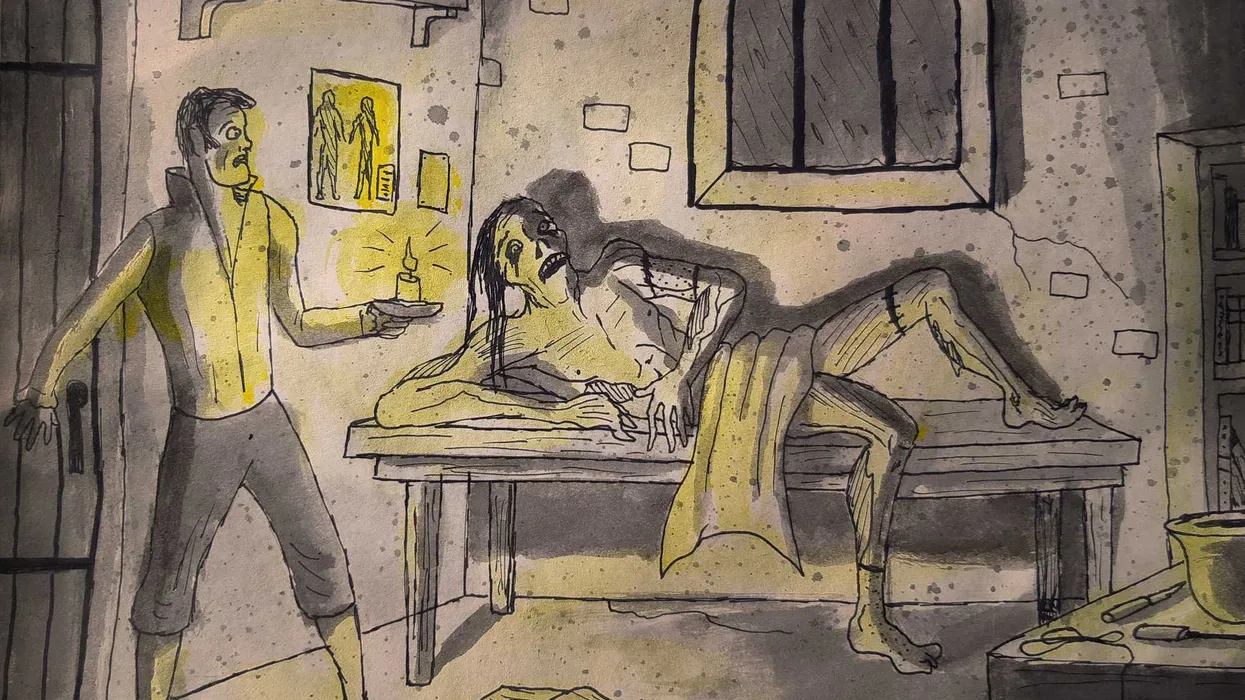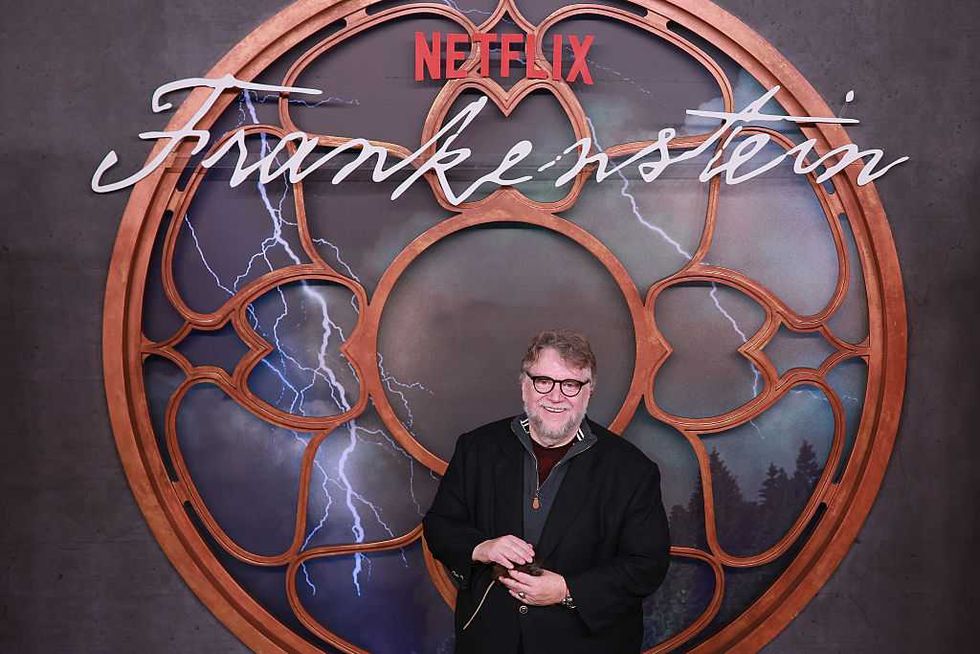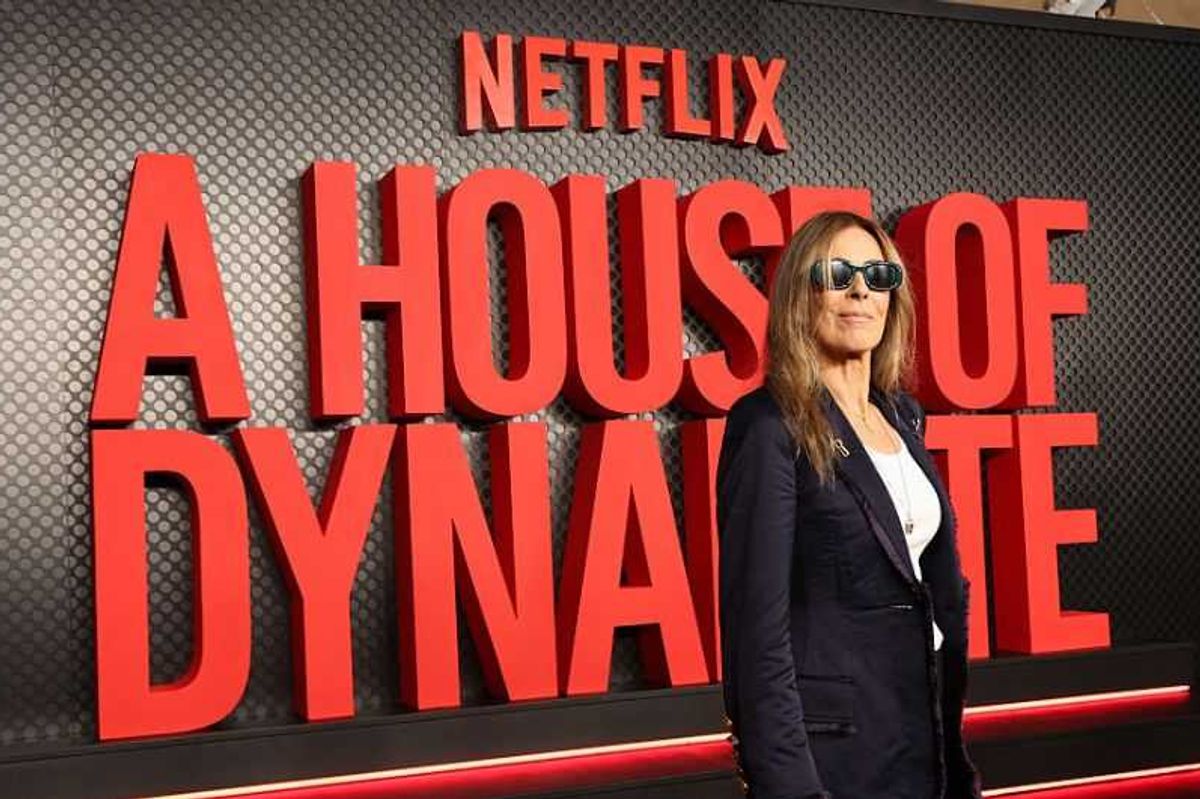
Category: Netflix
How ‘Frankenstein’ was turned into a woke parable — and missed the real horror

Although there has been a long slew of adaptations, parodies, and spin-offs of “Frankenstein,” many fans of Mary Shelley’s famous novel were looking forward to the newest iteration by Guillermo del Toro, which just came out.
In the age of AI, gene therapy, and the modern aversion to death, the story of a scientist who gives life to a creature of his own design naturally resonates with most people. Moreover, a director who is known for his ability to craft fantastical narratives, gothic settings, and unworldly monsters seemed like the perfect fit for such a story.
What could have been a story of redemption and radical love is turned into one of violent horror and unavoidable tragedy.
But with such a tale from such a director at such a time, there was also a good chance the whole film could become an overwrought piece of woke propaganda. Would del Toro stay faithful to the source material, or would he indulge his worst tendencies and recreate “The Shape of Water” with Shelley’s basic premise?
Sadly, he opted for the latter.
Woke makeover
While showing his usual visual flare, del Toro and his writers nonetheless succumbed to transforming the romantic tale of man’s excesses and consequent fall from grace into a woke narrative of a marginalized victim suffering from an oppressive father figure. The monster is not a hideous abomination that goes on a killing spree to spite his creator, but is rather a misunderstood, sensitive outcast who deserves sympathy.
It is his creator, Victor Frankenstein, who is the real monster: Not only does he abuse his own creature, but he murders multiple people and lies about it.
In fairness to del Toro, he probably planned out the film a few years ago when such a script happily aligned with the woke spirit of the time. And he did win an Oscar for “The Shape of Water,” so he can’t be blamed too much for returning to the same formula. How was he supposed to know that this would all become tedious and unfashionable in 2025?
And yet for all that, it’s wrong to assume that the original novel lacked these themes entirely.
Original intent
While most fans and critics examine the science-fiction elements of the novel and the Promethean allegory of man’s creation running amok, an honest reading would show that the novel is first and foremost a Romanticist manifesto. The main character is neither Victor nor his creation but the Swiss Alps that provide the backdrop of every scene, monologue, and conversation. The main conflict is not Victor attempting to stop his monster from terrorizing his friends and family, but finding meaning and unadulterated joy in the world rendered cold and dull by Enlightenment philosophy.
Most importantly, the book’s main argument is the problem of loneliness and how it animates humanity’s darkest impulses. The movie actually deals with this idea somewhat, though the novel is fully based on it.
How else should the reader make sense of all three of the main characters (besides the Alps), who all suffer from profound loneliness? The first character to appear in the book is the ambitious explorer and scientist Robert Walton, who attempts to go to the North Pole. Besides detailing his progress to his sister in a series of letters, he also mentions his lack of a friend. This leads him to immediately take interest in the Swiss scientist Victor Frankenstein, who just happens to be in the Arctic, searching for his monster.
Frankenstein, in turn, also reveals his own introverted nature and consequent desolation.
RELATED: How Disney butchered ‘Snow White’ — and it’s worse than just wokeness
 Manuel Velasquez/Getty Images
Manuel Velasquez/Getty Images
Even though he has good friends, a loving father, encouraging teachers, and a bride waiting for him, Frankenstein seems to reject their company. Either he feels unworthy of such friends, especially after the mayhem inflicted by his monster, or he desires full control in his relationships.
More than anything, this antisocial stance seems to be the main inspiration for creating his monster. Even though many naturally assume he was driven by glory, power, and morbid curiosity, Shelley hardly mentions any of that. Instead she details Victor’s loving upbringing and beautiful surroundings, only to have him forget all this and conduct a weird experiment of bringing a monster to life.
Then, of course, there is the monster himself, who is quite open about his loneliness and resorts to terror to have a companion. Abandoned by Victor, the creature roams the countryside, fruitlessly searching for a human being who can stand to befriend him. Long story short, this doesn’t happen, so he takes revenge on Victor for putting him in this situation.
Alone, we break
Read through the prism of loneliness, the novel makes a surprisingly compelling case not only for cultivating friendship but also for the kind of dysfunction that results from the lack thereof.
This is especially pertinent for audiences today who are forced to cope with the mass atomization of modern life.
In terms of their social life, most young people in the developed world often resemble Robert Walton, Victor Frankenstein, Frankenstein’s monster, or some combination thereof. They feel misunderstood, have few outlets for their thoughts and emotions, and respond in similar ways to the characters: They seek internet fame, indulge in darker temptations, and even lash out against a world that seems to reject them.
Much like the literary critics and adaptors who miss this larger theme in their analysis of the smaller ones that result, today’s social commentators who remark on the pathologies of the youth do the same.
At the heart of all this dysfunction is loneliness. And behind the social crisis lies a spiritual crisis.
Had Frankenstein abided by Christian teaching, he would accept his limitations and work to overcome his personal misgivings of befriending and serving others. Instead of trying to build a companion for the monster, only to dismantle it in a fit of rage, Victor could have loved his creation, much as God does. Instead of the monster basing his morality on Goethe, Plutarch, and Milton — which all promote epic struggles and titanic egos — he could have picked up the much more available (and readable) Gospels, which stress forgiveness and humility.
Then again, this is Mary Shelley’s story, and she was far from a devout Christian. Similarly, del Toro is also an atheist and likely shares the same outlook on the Christian demands of friendship, virtue, and human creativity.
What could have been a story of redemption and radical love is turned into one of violent horror and unavoidable tragedy.
Created for fellowship
Still, even if such Romantic secular humanism makes for better dramatic tension and suspense, it elides the deeper truth that comes out of the story: Man is not meant to be alone.
Victor’s real crime was not his ambition or curiosity but forsaking everyone around him. It wasn’t an abusive father that led him to this (as the new film suggests) but his willful ignorance of the Father in Heaven. As such, he creates a personal hell with its very own devil.
Even if Shelley and del Toro miss this point, readers and audiences should take heed and confront the problems of loneliness and nihilism in the world around them.
‘A House of Dynamite’: Netflix turns nuclear war into an HR meeting

Netflix’s thriller “A House of Dynamite” very much wants to teach us something about the folly of waging war with civilization-ending weapons. The lesson it ends up imparting, however, has more to do with the state of contemporary storytelling.
The film revolves around a high-stakes crisis: an unexpected nuclear missile launched from an unspecified enemy and aimed directly at Big City USA. We get to see America’s defense apparatus deal with impending apocalypse in real time.
It seems the best Ms. Bigelow, Mr. Oppenheim, and the team at Netflix can offer up is a lukewarm ‘nukes are bad, mmkay?’
Triple threat
“Revolves” is the operative word here. The movie tells the same story three times from three different vantage points — each in its own 40-minute segment. From first detection to the final seconds before detonation, we watch a bevy of government elites on one interminable red-alert FaceTime, working out how to respond to the strike.
This is the aptly named screenwriter Noah Oppenheim’s second disaster outing for the streamer; he recently co-created miniseries “Zero Day,” which features Robert De Niro investigating a nationwide cyberattack.
That series unspooled a complicated and convoluted conspiracy in the vein of “24.” “A House of Dynamite” clearly aims for something more grounded, which would seem to make accomplished Kathryn Bigelow perfect for the job.
And for the film’s first half-hour she delivers, embedding the viewer with the military officers, government officials, and regular working stiffs for whom being the last line of America’s defense is just another day at the office … until suddenly it isn’t. The dawning horror of their situation is as gripping as anything in “The Hurt Locker” or “Zero Dark Thirty.”
Then it happens two more times.
On repeat
In Shakespeare’s “Twelfth Night,” Duke Orsino laments a repetitive song growing stale: “Naught enters there of what validity and pitch soe’er, but falls into abatement and low price.”
Or put another way, the tune, not realizing its simple beauty, sings itself straight into worthlessness.
And somehow, this manages to be only part of what makes “A House of Dynamite” so unappealing. Our main characters — including head of the White House Situation Room (Rebecca Ferguson), general in charge of the United States Northern Command (Tracy Letts), and the secretary of defense (Jared Harris) — offer no semblance of perspicacity, stopping frequently to take others’ feelings into account before making decisions, all while an ICBM races toward Chicago. From liftoff to impact in 16 minutes or less, or your order free.
Missile defensive
So thorough is this picture of incompetence that the Pentagon felt compelled to issue an internal memo preparing Missile Defense Agency staff to “address false assumptions” about defense capability.
One can hardly blame officials when, in the twilight of the film, we’re shown yet another big-screen Obama facsimile (played by British actor Idris Elba) putting his cadre of sweating advisers on hold to ring Michelle, looking for advice on whether his course of action should be to nuke the whole planet or do nothing. The connection drops — she is in Africa, after all, and her safari-chic philanthropy outfit doesn’t make the satellite signal any stronger. He puts the phone down and continues to look over his black book of options ranging “from rare to well done,” as his nuclear briefcase handler puts it.
And then the movie ends. The repetitive storylines have no resolution, and their participants face no consequences. The single ground missile the U.S. arsenal managed to muster up — between montages of sergeants falling to their knees at the thought of having to do their job — has missed its target.
Designated survivors — with the exception of one high-ranking official who finds suicide preferable — rush to their bunkers. The screen fades to black, over a melancholy overture. Is it any wonder that audiences felt cheated? After sitting through nearly two hours of dithering bureaucrats wasting time, their own time had been wasted by a director who clearly thinks endings are passé.
No ending for you
If you find yourself among the unsatisfied, Bigelow has some words for you. In an interview with Bulletin of the Atomic Scientists, she justified her film’s lack of a payoff thusly:
I felt like the fact that the bomb didn’t go off was an opportunity to start a conversation. With an explosion at the end, it would have been kind of all wrapped up neat, and you could point your finger [and say] “it’s bad that happened.” But it would sort of absolve us, the human race, of responsibility. And in fact, no, we are responsible for having created these weapons and — in a perfect world — getting rid of them.
Holy Kamala word salad.
RELATED: Phones and drones expose the cracks in America’s defenses
 Photo by dikushin via Getty Images
Photo by dikushin via Getty Images
Bigelow-er
For much of her career, director Kathryn Bigelow has told real stories in interesting ways that — while not always being the full truth and nothing but the truth — were entertaining, well shot, and depicted Americans fulfilling their manifest destiny of being awesome.
That changed with Bigelow’s last film, 2017’s “Detroit,” a progressive, self-flagellating depiction of the 1967 Detroit race riots (final tally: 43 deaths, 1,189 injured) through the eyes of some mostly peaceful black teens and the devil-spawn deputy cop who torments them. “A House of Dynamite” continues this project of national critique.
But what, exactly, is the point? It seems the best Ms. Bigelow, Mr. Oppenheim, and the team at Netflix can offer up is a lukewarm “nukes are bad, mmkay?” This is a lecture on warfare with the subtlety of a John Lennon song, set in a world where the fragile men in charge must seek out the strong embrace of their nearest girlboss.
It’s no secret that 2025 carries a distinct “end times” energy — a year thick with existential threats. AI run amok, political fracture edging toward civil conflict, nuclear brinkmanship, even the occasional UFO headline — pick your poison. And it’s equally obvious that the internet, not the cinema, has become the primary arena where Americans now go to see those anxieties mirrored back at them.
“A House of Dynamite” is unlikely to reverse this trend. If this is the best Hollywood’s elite can come up with after gazing into the void, it’s time to move the movie industry to DEFCON 1.
search
categories
Archives
navigation
Recent posts
- The families behind our veterans deserve more than once-a-year thanks November 27, 2025
- 7 Filipino human trafficking victims repatriated — BI November 27, 2025
- NBA: Zach Edey-led Grizzlies outlast Pelicans in overtime November 27, 2025
- NBA: De’Aaron Fox’s season-high 37 spark Spurs past Blazers November 27, 2025
- NBA: Brandon Ingram’s last-second hoop lifts Raptors over Pacers November 27, 2025
- NCAA: San Beda ousts LPU to book Final Four slot November 27, 2025
- NBA: Heat hold on for 6th straight win at Bucks’ expense November 27, 2025






